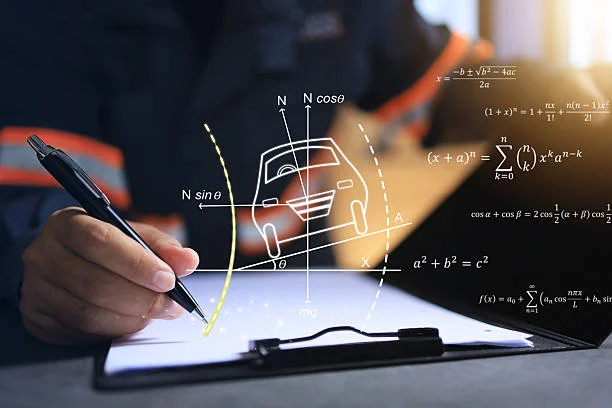The repair estimate is one of the most important things to get right for an auto body shop. If the estimation of the car damage repair is too low, then the shop won’t make enough money and, essentially, end up working for free. If technicians quote the repair at too high a cost, then they risk losing the client to another collision repair business with a more accurate estimate. Furthermore, if the shop consistently quotes auto body repair costs too high, then it may get a reputation for trying to take advantage of its clients.
But estimations aren’t easy. There are many factors that go into a repair estimate and even if technicians are honest and experienced, they’re going to under- or overcharge occasionally. That’s why auto body repair shops are increasingly turning to computerized estimating to get their auto body repair costs right.
The conversation doesn’t end here—discover more insights.
What is a computerized repair estimate?
There are numerous software solutions available to auto body repair shops to help them with the repair estimate process. These programs can help detect the severity of the damage, highlight which repair part or parts are necessary, and provide an estimate for the collision repair cost based on the cost of the part(s), the estimated labour, and other factors.
At this point, a large amount of car damage repair involves computer-assisted estimation. Some repairs or problems are obvious; if you accidentally reverse into a pillar and break your taillight, it’s not too difficult to assess the problem and fix it. However, many collision repairs aren’t so evident, and modern technology can guide technicians in their estimation process.
Key features of specialized collision repair estimate software
Different software solutions offer different features, some of which may be specialized for the particular work an auto body repair shop does. However, these platforms all tend to offer some important features to help collision repair technicians. These include:
- An estimation function: This is an action that uses a database of labour times, part prices, paint materials, and manufacturer repair procedures to calculate an estimated auto body repair cost.
- VIN scanning: Scanning the vehicle identification number (VIN) allows the software to auto-populate the vehicle make, model, and year. It can also then retrieve vehicle-specific repair and parts data and ensure compatibility for original equipment manufacturer (OEM) parts.
- Photo and 3D imaging integration: Technicians can take photos of damaged vehicles, often with tablet devices, and the program uses photo-estimating tools that may be assisted by artificial intelligence (AI). Three-dimensional imaging and scanning can assess the severity of damage and reveal damage hidden to the naked eye.
- Integration with management systems: Some software can feed estimate information directly into shop management software, parts ordering systems, and insurance claim platforms.
How does a software-assisted repair estimate work?
To better understand how these repair estimate systems work, let’s go through the process step by step. We’ll imagine a hypothetical vehicle, let’s say a 2019 hatchback, that’s suffered a rear-end collision.
The car has more than just dents and scratches, so a simple dent repair probably won’t fix the damage. Knowing this, the technicians fire up their repair estimate software and get to work. This is what that might look like:
Step 1: Intake and VIN scan
The collision repair technician scans the VIN using a handheld scanner or tablet. The system automatically loads the vehicle’s make, model, trim level, and options. This delivers useful information to the technician almost instantly, a process that may have taken an hour’s worth of research without the software.
Step 2: Damage inspection and photos
The technician takes photos of the damaged rear bumper, trunk, and taillight. If the shop uses AI photo estimating, the software instantly analyzes the images to identify visible damage, estimate possible internal damage, and generate a preliminary repair estimate for the rear body panel, bumper reinforcements, and adjacent parts.
Step 3: Estimation software use
With the software, the technician then constructs a detailed repair plan. They begin by selecting the damaged parts (rear bumper cover, trunk lid, left taillight). The software pulls current OEM part prices and labour times from its database. Then it adds refinish time for each painted panel and includes paint and materials cost to fix the superficial dents and scratches.
Step 4: Additional tools
The collision repair shop might use a 3D measuring system to check for frame misalignment. The software imports the results into the estimate, showing the need for possible frame straightening.
Step 5: Repair estimate completion
The system adds up the totals for the following factors:
- Labour costs.
- Parts costs.
- Paint and materials.
- Taxes and shop fees.
It adds these up to produce a final estimate and prints or emails it to the shop and/or the client.
Step 6: Insurance integration
If it’s an insurance claim, the software may upload the repair estimate directly to the insurer’s portal through the estimating platform. Claims adjusters can review, approve, or request changes digitally.
Step 7: Parts ordering and workflow
Once approved, the estimate feeds into the shop management system. The system can then automatically order the necessary replacement parts through integrated suppliers. Depending on how the auto body repair shop has set up its software, the system may then schedule the job and automatically assign collision repair technicians based on availability and expertise.
Getting car damage repair estimates right
There are experienced technicians that have mastered the estimation process. However, by using repair estimate software, an auto body repair business can systematize the process and reliably provide accurate collision repair cost estimates. Outreach on Seo
Want more insights like this? Head over to 2A Magazine and start exploring.







